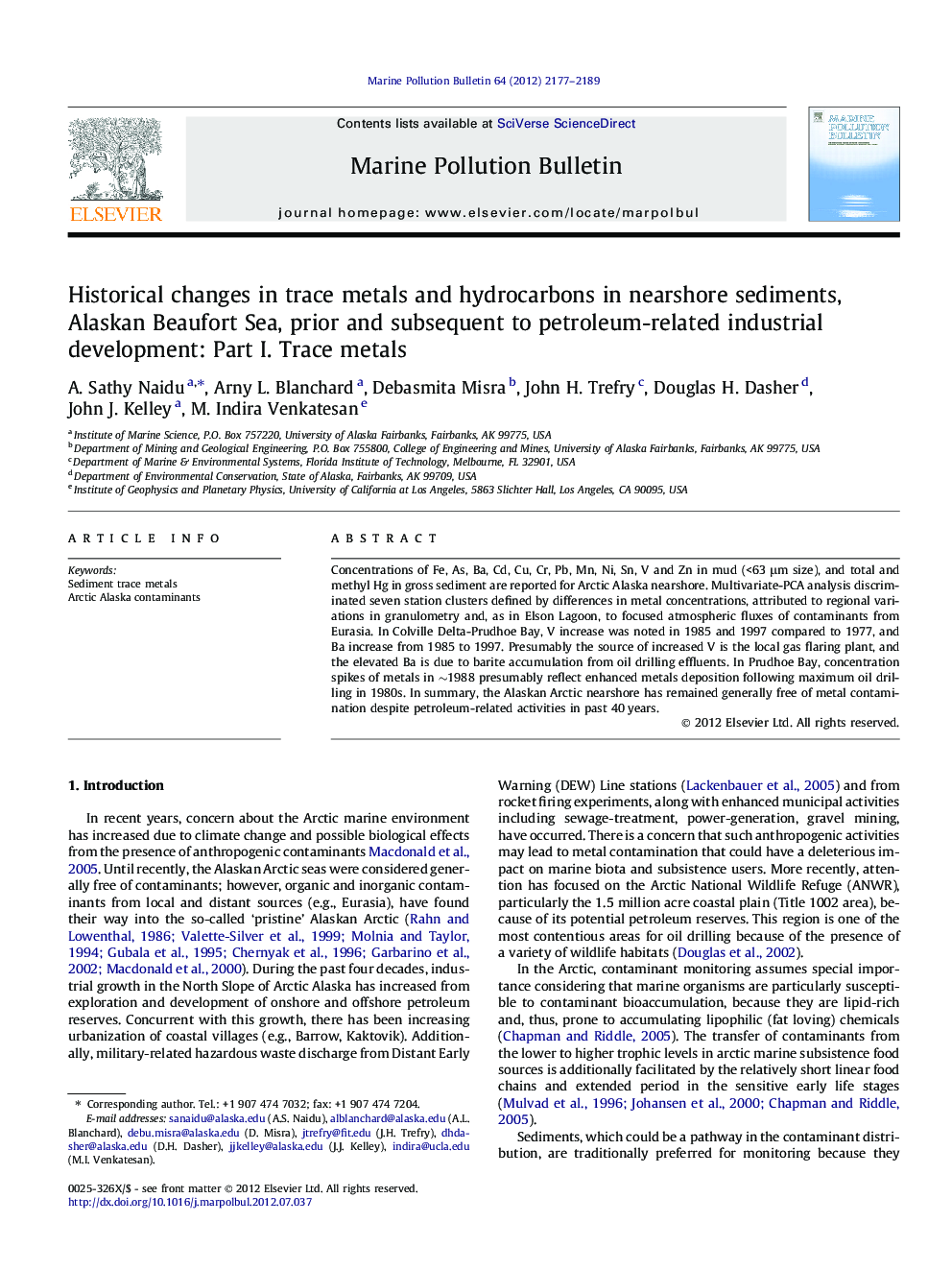| Article ID | Journal | Published Year | Pages | File Type |
|---|---|---|---|---|
| 6361012 | Marine Pollution Bulletin | 2012 | 13 Pages |
Concentrations of Fe, As, Ba, Cd, Cu, Cr, Pb, Mn, Ni, Sn, V and Zn in mud (<63 μm size), and total and methyl Hg in gross sediment are reported for Arctic Alaska nearshore. Multivariate-PCA analysis discriminated seven station clusters defined by differences in metal concentrations, attributed to regional variations in granulometry and, as in Elson Lagoon, to focused atmospheric fluxes of contaminants from Eurasia. In Colville Delta-Prudhoe Bay, V increase was noted in 1985 and 1997 compared to 1977, and Ba increase from 1985 to 1997. Presumably the source of increased V is the local gas flaring plant, and the elevated Ba is due to barite accumulation from oil drilling effluents. In Prudhoe Bay, concentration spikes of metals in â¼1988 presumably reflect enhanced metals deposition following maximum oil drilling in 1980s. In summary, the Alaskan Arctic nearshore has remained generally free of metal contamination despite petroleum-related activities in past 40 years.
⺠Trace metal conc. in nearshore mud of north Arctic Alaska, statistically analyzed. ⺠Regional differences in metal chemistry are chiefly constrained by granulometry. ⺠No stratigraphic change in metals; except downcore methylation of THg. ⺠Petroleum development possibly increased V and Ba conc. at Prudhoe Bay. ⺠Thus, nearshore has remained quite pristine despite post-1977 industrialization.
